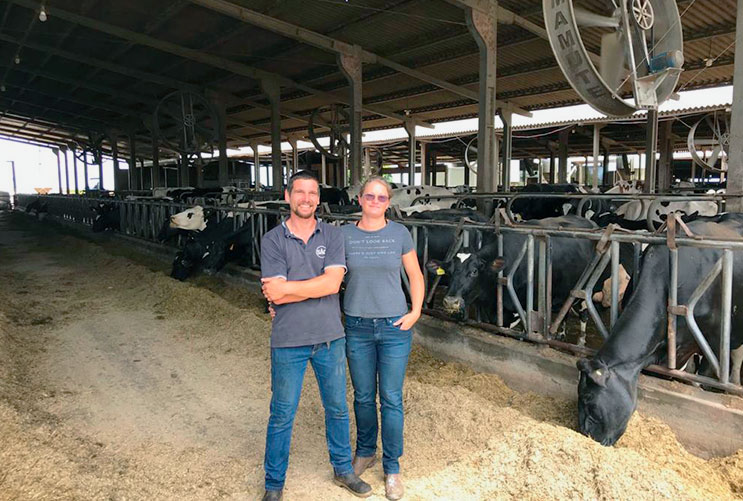Mastitis Experience: The results achieved after vaccinating the herd
Mastitis is a big headache for many farmers around the world, whether they have 50 or 500 cows. Dealing with this disease can be a challenge but there are some key points we can include in our daily routine to combat it. In this interview, Simone Erkel tells us of his experience with Mastitis and the results achieved after applying some solutions to the herd, such as vaccination.
Interview with Simone, Paraná in Brazil
The Fazenda Morro dos Ventos has approximately 430 cows in milk, with an average production of 36L, divided between 3 milkings per day.
The cows are housed with a freestall system with mattresses and sawdust.

1- What was the trigger to start vaccinating against mastitis and set up a milk quality follow-up?
We had a very high incidence of clinical mastitis, that was leading to high spending on antibiotics. The focus of vaccination was to improve the immune system of the herd, leaving them more resistant to the challenge.
2- What caught your attention regarding mastitis vaccination?
HIPRA’s proposal was very distinctive compared to the others, as it was not focused purely on the commercial aspect. HIPRA delivers a package of solutions: product + high quality technical support.
This vaccine is a very good product, working against clinical and subclinical mastitis and that, together with the technical support, really impressed me.
3- What benefits have you had from the use of this vaccine?
We had a decrease in clinical mastitis, not only in the number of cases but also in the severity of the cases, which are now milder.
As a consequence, the expenditure on antibiotics was reduced, as were the losses in terms of discarded milk. We also had a plus of lower bulk tank SCC.

4- What would you say to a farmer who is considering vaccinating his herd?
It is a very good tool, that should be properly framed within a milk quality programme. It should be combined with management of the cows’ environment, milking routine and milking machine maintenance.
Mastitis is the most costly disease on a dairy farm so we need to use all the available knowledge and technology to control this problem.


